Wakefield Chantry Chapel
OS grid reference:- SE 327 208
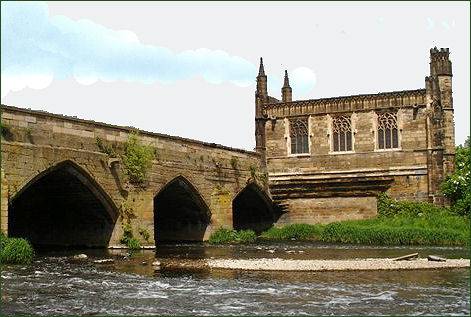 The Chantry Chapel of St Mary the Virgin at Wakefield is one of only three surviving bridge chapels in England and, with the bridge, is a scheduled ancient monument and a Grade I listed building.
The Chantry Chapel of St Mary the Virgin at Wakefield is one of only three surviving bridge chapels in England and, with the bridge, is a scheduled ancient monument and a Grade I listed building.
Wakefield once boasted four chantry chapels, three of these dated back to the thirteenth century. They were built outside the medieval town on the roads. The Chantry of St John the Baptist stood on Northgate, the road to Leeds. The Chapel of St Mary Magdalene was on Westgate where it crossed the Ings Beck on the road to Dewsbury. St Swithun's Chantry Chapel, on the York road, was near Clarke Hall.
The Chantry Chapel of St Mary the Virgin was built in the mid fourteenth century when the stone bridge across the River Calder replaced a wooden one. It stood on the road to Doncaster and the south. Wakefield's medieval nine-arched bridge is 320 feet (98 m) long, was built in stone between 1342 and 1356. The chapel on the bridge was licensed in 1356.
The Battle of Wakefield took place about a mile south of the bridge in 1460. The seventeen year old Edmund, Earl of Rutland, second son of Richard, Duke of York and younger brother of Edward IV, was killed near the bridge while attempting to flee the battle either on the orders of the Lancastrian John Clifford, 9th Baron de Clifford, who's own father Thomas Clifford had been killed at the First Battle of St Albans on 22 May 1455, or by some accounts, by Lord Clifford himself in revenge for Clifford's own father's death at the hands of the Yorkists, Clifford was later to be termed 'the Butcher'.
The chapel was used for worship until the Reformation and Abolition of Chantries Acts when all Wakefield's four chantry chapels were closed. The bridge chapel survived due to it being a structural element of the bridge. After closure it was used as a warehouse, library, office and cheese shop and survived bridge widening in 1758 and 1797. The bridge and its chapel were painted by artists including J.M.W. Turner whose watercolour dates from 1793
The original stonework can be seen at the base, although the upper part, including the west front, was rebuilt in 1847-8. The chapel was transferred to the Church of England in 1842 and the Yorkshire Architectural Society, influenced by the Oxford Movement, persuaded to undertake its restoration. The society, keen to restore medieval ecclesiastical remains, adopted designs by George Gilbert Scott. . The new west front differed slightly from its medieval predecessor.
The original richly carved medieval fašade was moved to Kettlethorpe Hall, where it became the frontage to a folly boathouse. The chapel opened for Anglican worship in 1848 and was used as the parish church of the newly formed ecclesiastical district of St Mary until a church was built in 1854. The bridge chapel became a chapel-of-ease and services were held irregularly. In the 1980s it seemed likely the chapel would be declared redundant. In January 2000 a parish boundary change brought the chantry into the care of Wakefield Cathedral.
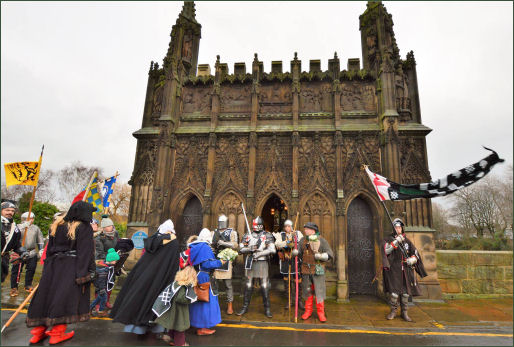
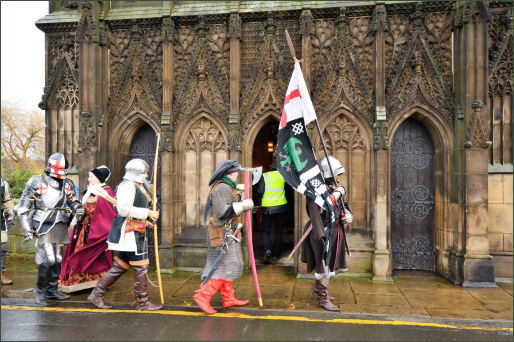
The chapel's west front has buttresses at either end and has three narrow doorways. Its fašade is divided into five elaborately carved panels. The panels originally represented the Annunciation, the Nativity, the Resurrection, the Ascension and the Coronation of the Virgin but the fifth panel was replaced by the Descent of the Holy Ghost when it was restored.

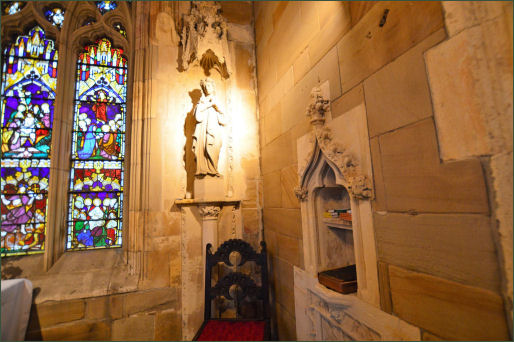
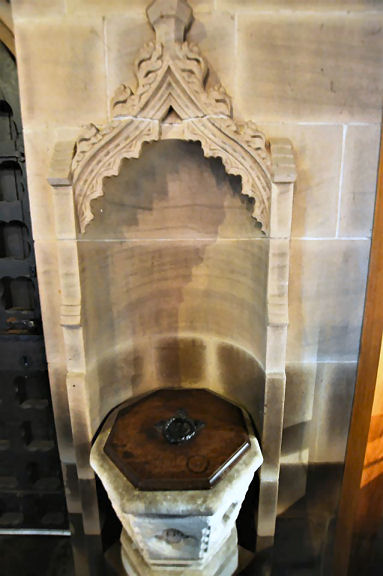
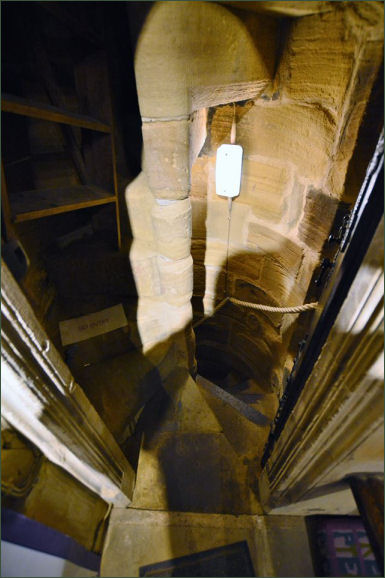
Abbeys and Churches of Yorkshire
